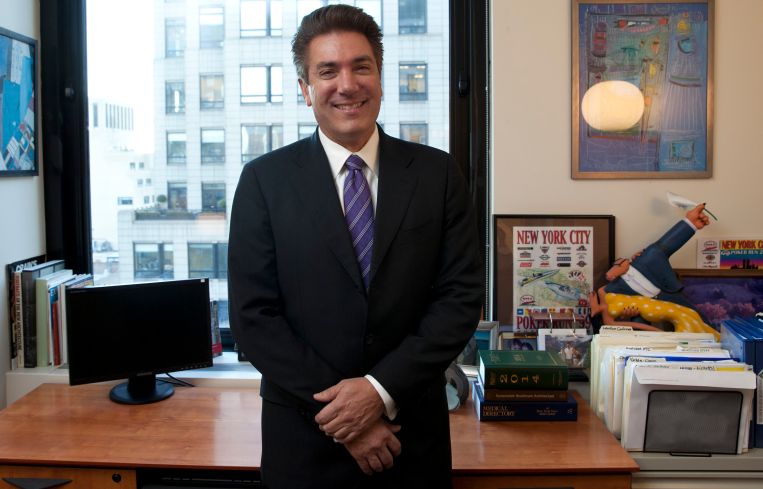The Patient Negotiator: Paul Wexler of the Wexler Healthcare Properties Team
By Gus Delaporte March 12, 2014 2:30 pm
reprints
Though best known in New York for its residential brokerage business, Corcoran also lends its brand to one of the city’s most prominent health care real estate teams. Led by 30-year industry veteran Paul Wexler, the Wexler Healthcare Properties team has closed more than 1,000 leases and sales worth billions of dollars in the health care real estate space. Mr. Wexler has done deals with major New York hospitals and a variety of health care specialists. He has a unique perspective on the state of the city’s health care real estate market and spoke with Commercial Observer last week about the rise of walk-in clinics, the impact of the Affordable Care Act and more.

Commercial Observer: Have you noticed increased reluctance from landlords to accommodate medical tenants in buildings that don’t specifically cater to those types of tenants?
Mr. Wexler: It’s the opposite, in fact. A lot of commercial owners have actually experienced that medical tenants are good, long-term stable tenants and have enjoyed having the opportunity to have them in their buildings because they are financially reliable.
More often than not, when a medical tenant moves in, they don’t move out. They are being welcomed by landlords.
Are there reasons why landlords would be reluctant about leasing to medical tenants?
Potentially, there is higher volume of people that come in and out of medical offices, and some landlords don’t want that.
Do medical tenants pay a premium to build out their space?
From one specialist to the next, medical spaces can vary quite a bit. Landlords that are looking to incent a medical tenant to their building will pay as much as 50 percent more than they’d pay on a commercial installation. On the flip side, landlords can often get medical tenants to pay more rent than a commercial tenant. In lower floors with not as much light that might be hard to rent to a commercial tenant, that space could be desirable for a medical tenant.
What is the premium medical tenants pay in rent compared to office tenants?
It varies from tenant to tenant and building to building. There is not an across the board number I could give you.
How has the prevalence of walk-in clinics affected the market?
I don’t think it’s had a dramatic effect on the market. Medicine is becoming based upon convenience for the patients, and health care providers want to increase their patient catchment areas, expanding into retail locations and central areas. There is pent-up demand for providers to be in those locations. Walk-in clinics are a different access point for patients to access doctors. It’s a different area where deals can be done.
What I will say is: I am curious to see whether these retail-like vendors can pay the additional premiums that one pays for retail space and whether that business model can be supported. I think the jury is still out.
How significant is the decision to rent or buy space to medical practitioners?
I think there are a lot of people who still like to own space, but that is hard to come by. Typically, the decision is more driven around meeting the physical requirements of a group. But if the economics make sense, there’s a population that still wants to own space.
And how significant is the decision to locate in a residential building versus a commercial building?
More often than not, people today are concerned with the location of the space, and as long as the economics make sense, whether it’s a purchase or lease at the base of a residential building or in an office building, it’s more about the layout of the space. The driver is how users’ needs are served. Residential versus commercial is more about the efficiencies that can be accomplished.
Has the Affordable Care Act influenced real estate decisions in the health care space?
There has been a consolidation of providers as a result of the Affordable Care Act. There’s no doubt that there’s a change-up of who the users of these spaces are and what types of spaces providers are taking today. There has absolutely been a significant impact. The providers out there have been consolidating. There will be fewer, but larger, providers when all is said and done.
What is changing?
The thing that is changing is there are more users for space. There are also efficiencies that people are looking to accomplish by consolidating practices and services. To the extent that administrative costs can be reduced, people are very economically minded today. To the extent they can design spaces and deliver in a more efficient manner, people are making more careful decisions when finding spaces. Bigger is better.
Have practitioners been expanding to new neighborhoods?
There are a lot of areas that were previously underserved that providers are looking to reach out to and set up shop in because of the Affordable Care Act and also because of the more patient-centric health care that’s being provided.
We are working on something at 156 William Street. It was previously an office building with some medical tenants and is being repurposed into a medical building. It is down in the Financial District, which was previously underserved on the medical front. There is an increased desire for opportunities to see a doctor down in those areas.
Are there other areas of the city that are on the radar of practitioners?
All areas that were previously underserved medically. In the Bronx or Brooklyn and other areas outside Manhattan, there are a lot of different neighborhoods seeing community health centers set up to help people access medical care. A large percentage of people who previously went to the emergency room now have insurance and are looking for other health care providers to provide their services.
Are there particular specialties that are seeing growth?
There are a number of health care providers looking to consolidate specialties into one location to make it one-stop shopping. For instance, you may have an opportunity go to an orthopedic surgeon, but there also could be an imaging center there. There’s a lot of thought going into what services are being provided and making things more patient- friendly. We are seeing a lot of synergistic opportunities created by medical practitioners consolidating.
Do you have any final thoughts?
We all get sick, and we all need doctors. The reality is medical practitioners make a highly desirable tenancy. That is why landlords are reaching out and reconsidering the desirability of medical tenants.



